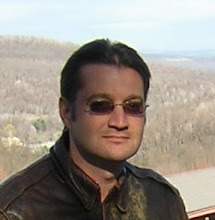The Maryland State Police file on anti-death penalty protestors contains a chronological record of the state’s spying on liberal activists but little else. There is much, much more to this story that must be discovered.
1. Who Ordered the Investigation?
Former Superintendent of the State Police Tim Hutchins claims that Governor Ehrlich did not know about the investigation. If that is true, then who targeted the anti-death penalty protestors? Was it Hutchins or someone closer to the Governor? Did anyone on the Governor’s staff know about it or condone it?
2. Why Go After Anti-Death Penalty Activists?
On page 14 of the file, even one of the spies admits, “Most death penalty protests in the past have not been violent.” And yet the state labeled the investigation “Terrorism: Anti-Government.” No allegation was ever made that these activists were linked to al-Qaeda, Hezbollah, Hamas, the Taliban or any other terrorist group. If the police wanted to investigate a violent group, what about anti-immigration activists? After all, the Gaithersburg day laborer center was set aflame a year ago and Casa de Maryland has been targeted with bomb threats. Did the police simply prefer to investigate liberal groups?
3. What Was the Involvement of Other Organizations?
The spies regularly shared their findings with other law enforcement organizations including other branches of the state police, the Department of General Services Police, the Baltimore City Police Department Intelligence Unit, and the Annapolis City Police. What did these agencies do with the information? The involvement of the Baltimore City Police is especially important because Martin O’Malley was the Mayor of Baltimore at the time. If the city police used information passed on by the state police to launch their own investigation, then former Mayor O’Malley bears as much responsibility for them as former Governor Ehrlich has for the state police.
4. Were There Other Investigations?
The spying on anti-death penalty protestors began in March 2005, well after 9/11. Were there other investigations in the interim or did the state police wait three-and-a-half years before deciding that terrorism was a problem? If peaceful anti-death penalty activists were targeted, was any liberal group safe?
All of these questions and more require a thorough public investigation. The Church Committee played a vital role in curbing abuses by the CIA and FBI after the excesses of the 1950s and 1960s. Perhaps Senate Judiciary Chair Brian Frosh will subject the state police to similar scrutiny in his upcoming hearings.
There is one last dimension to this story: what does it say about Governor O’Malley and former Governor Ehrlich? We will explore that in Part Five.
Thursday, July 24, 2008
Inside Ehrlich’s Secret Police: Part Four
Labels:
Ehrlich,
First Amendment Rights,
Secret Police Series,
Spying
Subscribe to:
Post Comments (Atom)


No comments:
Post a Comment